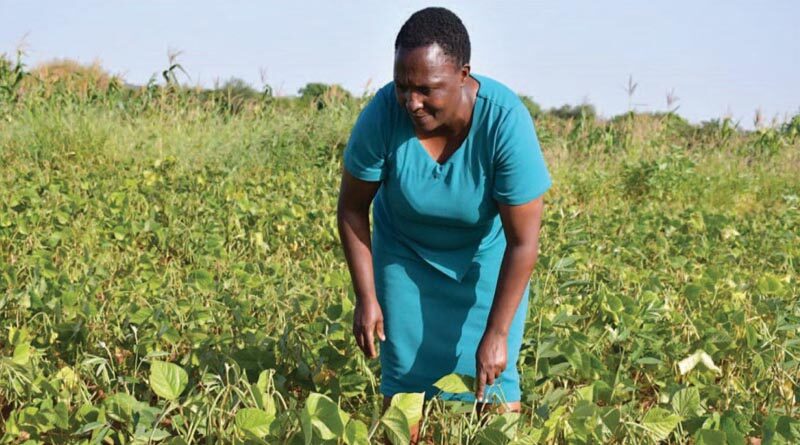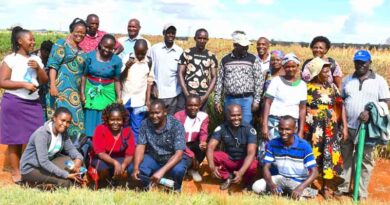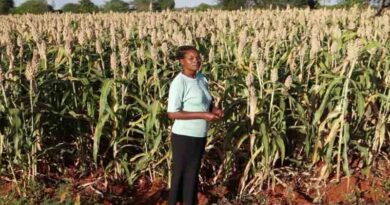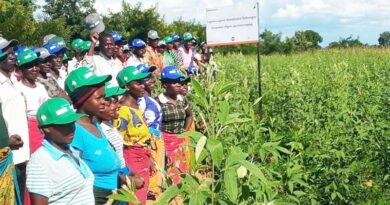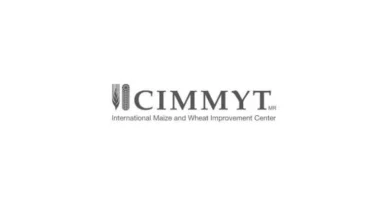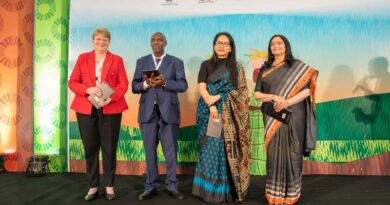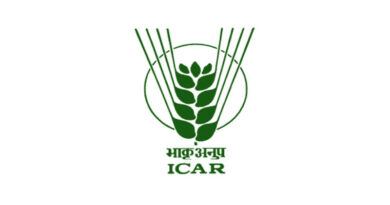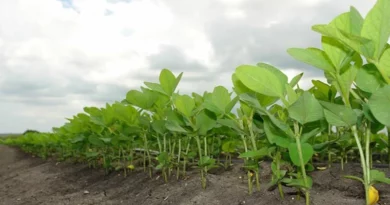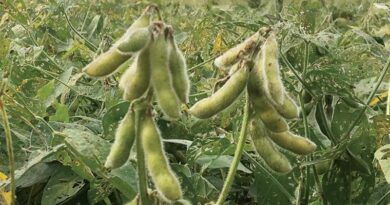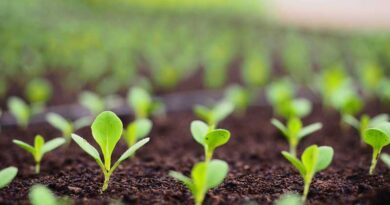Climate smart crops improve livelihood of farmers in south eastern kenya
05 March 2022, kenya: Increased production and marketing of dryland cereals (sorghum, pearl millet and finger millet) and legumes (pigeonpea, green gram, groundnut, and cowpea) in the Arid and Semi-arid Land (ASALs) of Kenya offers an important pathway to poverty reduction and improved food and nutrition security. Elizabeth Mwololo is among farmers who have benefitted from initiatives geared towards reducing poverty and improving food and nutrition security. After life in Nairobi became unbearable due to high living expenses, Elizabeth moved to Makueni, one of the ASAL counties in Kenya, with her husband and six children in 2015. She was later introduced to new Drought Tolerant Crops (DTC) varieties alongside training on Good Agricultural Practices (GAPs) and Post-Harvest Handling (PHH) by ICRISAT through the Accelerated Value Chain Development (AVCD) Program. Her fist attempt was cultivation of sorghum and green gram using the improved varieties. After a splendid performance, Elizabeth says that she was motivated to increase her farm size from 2 acres to 5 acres, which she acquired from her family. “Through DTCs like sorghum, I have been able to make money and have food for the family and the cattle. This is because sorghum matures faster and the yield is high, unlike maize which mostly fails when the rain is inadequate. Farming DTCs has helped me and my family to build 2 permanent houses, pay school fees for my children up to tertiary levels, among other investments,” says Elizabeth adding that she couldn’t have accomplished this if she continued staying in the city.
Once referred to as orphaned crops, climate smart crops or DTCs (sorghum, pearl millet, finger millet, pigeonpea, cowpea, green gram, and groundnut) have become an income generating activity for farmers in ASAL areas especially Makueni, Kitui, and Taita Taveta Counties, and a huge contributor to national food and nutrition security. The three counties are part of the ASALs’ production that account for about 48% of sorghum, 60% of millets, 99% of pigeonpea, 95% of green gram and 93% of cowpea produced in Kenya.
Also Read: Launch of new climate-smart desert farming in the CWANA region
In our field visits, we also met Ms. Catherine, a farmer who has embraced farming using DTCs and is now making better income than when she was farming maize. She cultivates sorghum, millet, and green grams on her two-acre farm in Makueni. Ms. Mbili who also trains farmers on farming the DTCs said in one acre of sorghum plantation, she is able to harvest between 15 to 20 bags of 100 Kgs with a bag selling at KES 3,000. This means that from one acre alone, she generates up to KES 60,000, more than twice of her income when she had previously put the land under maize where brokers used to buy the grain for as low as KES 1,200 per bag.
“Many of the farmers in this area used to rely on government relief food, but through improved varieties of DTCs they have been able to attain food security and generate income,” says Ms Mbili. “The AVCD program has incorporated the use of technology in training of farmers where we teach them the need and use of digital agricultural innovations to apply in their farming enterprises. So as not to leave anyone out, we have included the youth in the digital agriculture training so that they can help their elderly parents in accessing information on farming and marketing”, she added.
Elizabeth and Catherine’s households are among 163,000 households which have been provided with improved DTCs seed varieties through the AVCD program. This program was completed in 2021. Even though farmers like Elizabeth and Catherine continue reaping benefits brought about by use of improved varieties, there are still challenges across the value chain that impend optimization of the benefits. Lack of functional seed production and delivery systems, inadequate extension support, inadequate farmer coordination (Farmer Producer Organizations – FPOs), dysfunctional input and off-take markets are still a challenge.
To support small holder farmers like Elizabeth and Catherine, USAID through FTF-Kenya has funded a new program, Accelerated Institutional and funding Food Systems Development Program (AIFSD), to address the mentioned challenges by enhancing institutional capacity of actors across DTC value chain. One of the main component of the program is to strengthen the capacity of extension service providers in Kitui, Makueni and Taita Taveta. AIFSD conducted a three day workshop at the Agricultural Training Centre (ATC) in Makueni aimed at: enhancing capacity of extension officers to disseminate extension information on improved agricultural practices for increasing on-farm productivity of DTCs; Mainstreaming the use of digital technologies for the extension officers in providing accurate and timely information on production, post-harvest handling, nutrition and markets. The workshop which had 38 participants drawn from county agriculture, health and meteorological departments of Kitui, Makueni and Kitui was graced by Makueni County Executive Committee Member (CECM) for Agriculture, Mr Nzioki King’ola, County Director of Agriculture Mrs Mary Muteti, and Chief Officer Dr. Martin Mboloi as well as Dr. Romano Kiome, AIFSD Chief of Party, and Dr. Ganga Rao, AIFSD’s DTCs value chain manager.
Dr. Kiome called on the participants to embrace and empower farmers with modern digital agriculture knowledge and skills, noting that with the technological evolution, digital agriculture is the future. “This will not only enhance farming of DTCs where the farmers will be able to easily share and access information on GAPs, PHH and markets but will also attract the youth who have been reluctant to practice farming,” he added.
Dr. Ganga Rao highlighted that AIFSD which builds on achievements made by AVCD, is funded by USAID to a tune of USD 2.2 million for a three-year period. The program is informed by the need to reduce food imports brought about by poor performance of main staple grains like maize, wheat, and rice due to unfavorable weather patterns in ASALs, and to provide enough and more nutritious food, especially for the population in the ASALs.

